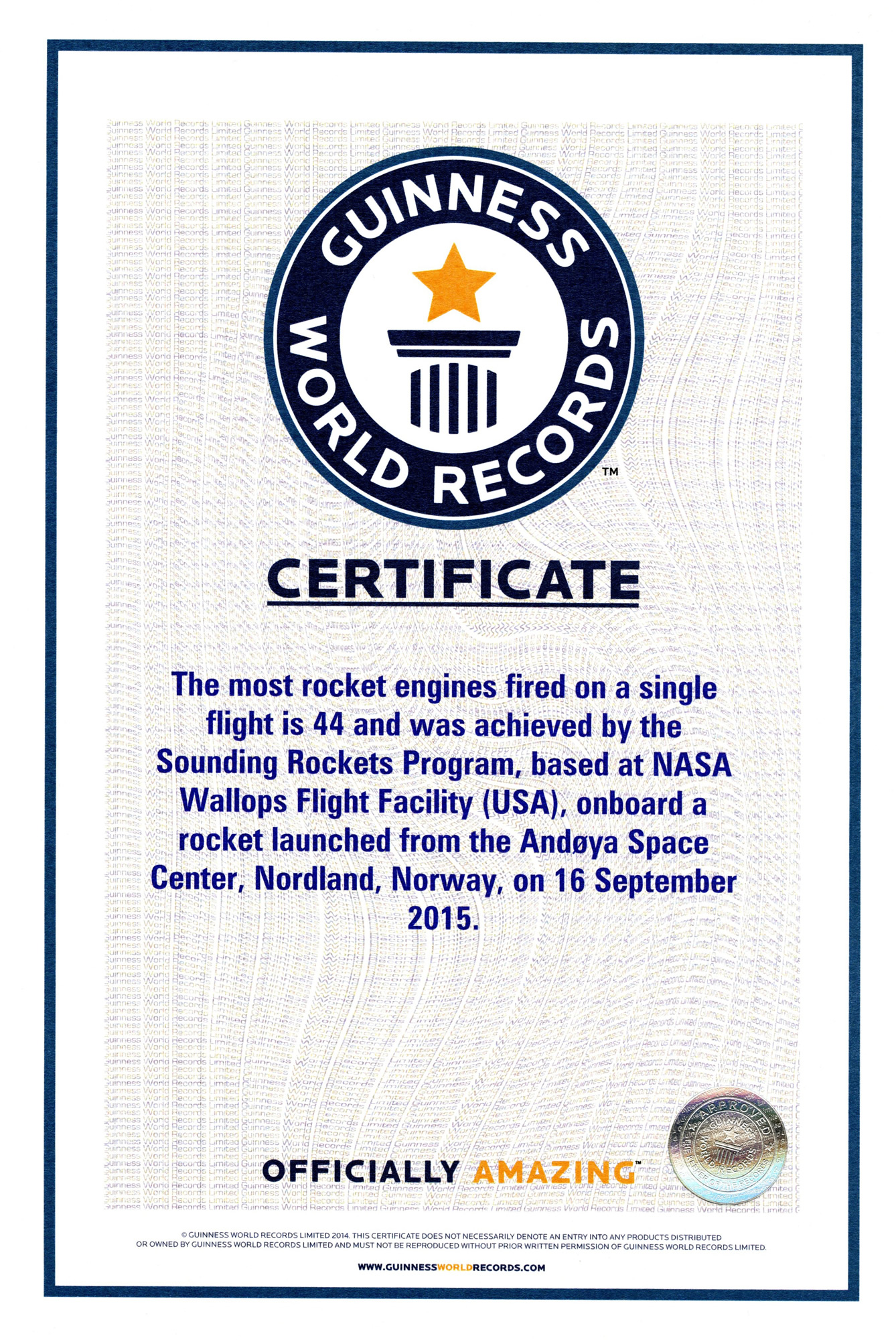NASA’s Wallops Flight Facility in Virginia has caught the attention of Guinness World Records. Wallops’ sounding rocket team conducted a mission that included the firing of 44 rocket engines. When the rocket launched on September 16, 2015, it set a world record for the most rocket engines fired on a single flight.
The Charged Aerosol Release Experiment II, or CARE II, studied the effects of dusty plasmas – charged particles that can occur naturally in the mesosphere — and the bulk of the rocket engines were burned to form an exhaust cloud of dusty plasma used for the experiment. Only three of the CARE II engines contributed to launching the rocket. Another four engines were spin motors, which are used to reduce the impact dispersion of the rocket. The remaining 37 engines provided the exhaust cloud.
CARE II was led by Paul A. Bernhardt with the Naval Research Lab, or NRL, in Washington, DC, and conducted from the Andoya Rocket Range in Norway
Although the rocket carried an NRL experiment, Wallops had a big hand in the mission. The team implementing the NRL concept for the multi-rocket-motor dust release module and leading the construction of CARE II are at Wallops.

Phil Eberspeaker, Office Chief for the Sounding Rocket Program, said, “Being recognized by Guinness World Records for this achievement is icing on the cake for the entire team. To successfully carry out this mission required great planning from everyone involved.”
NASA’s sounding rocket program provides a fast, cost-effective way of conducting science through suborbital missions. Each sounding rocket carries a payload with a very specific experiment. Science conducted and instruments flown may be used in the development of other space science missions.
With a combined vehicle and payload weight of nearly 6 tons, the Black Brant XI vehicle carried the CARE II payload and its multiple scientific instruments into the ionosphere, 186 miles above Earth. In a mission lasting only 10 minutes, scientists were able to generate the dusty plasma they wished to study by rapidly injecting dust particles made of aluminum oxide and other compounds into the ionosphere. This dust was then charged, producing plasma particles moving at hypersonic velocities. The resulting ionospheric disturbances were detected with in situ plasma instruments and recorded using ground-based scientific radars.
Chuck Brodell, Sounding Rocket Program vehicle manager, said he doesn’t anticipate Wallops breaking this record again in the near future, but “you never know what’s down the pike.”
CARE II is a follow-on to the CARE I rocket experiment conducted in September 2009 at Wallops. The NASA sounding rocket portion of both the CARE I and II missions were funded by the Department of Defense Space Test Program, which is charted to fund spaceflight for experiments.
NASA’s Wallops Flight Facility launches approximately 20 sounding rockets every year. Launches are routinely conducted from Wallops, Poker Flat Research Range in Alaska, White Sands Missile Range in New Mexico, Esrange in Sweden and the Andoya Rocket Range.
NASA’s Sounding Rocket Program is conducted at the agency’s Wallops Flight Facility, which is managed by NASA’s Goddard Space Flight Center in Greenbelt, Maryland. NASA’s Heliophysics Division manages the sounding-rocket program for the agency.


Comments are closed, but trackbacks and pingbacks are open.